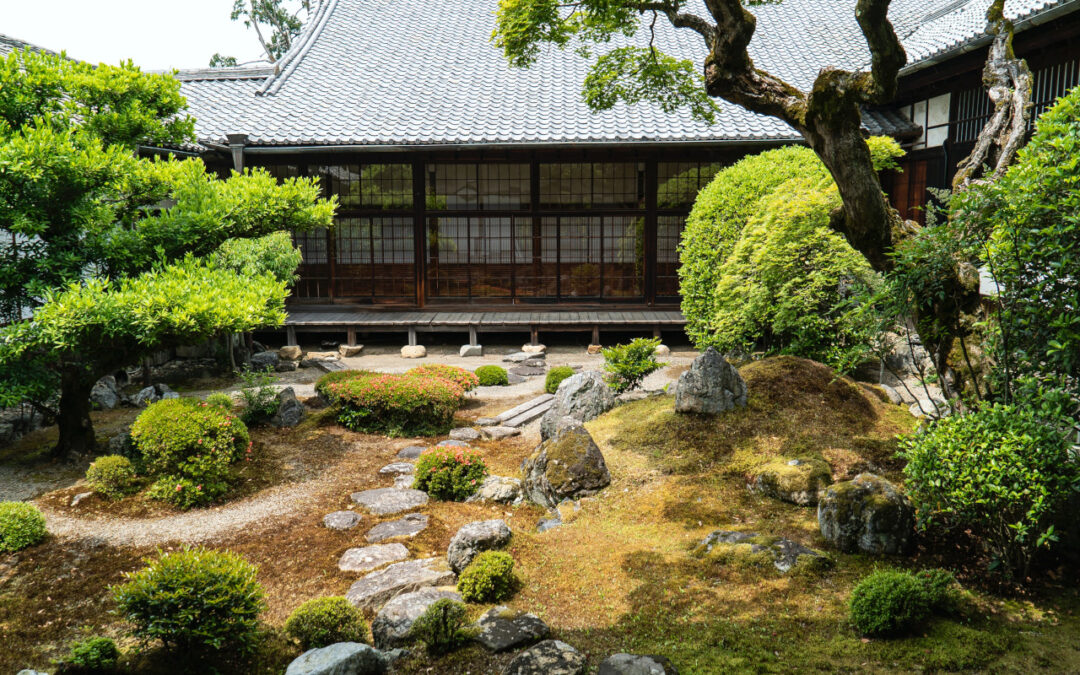As westerners, we are often compelled to control and plan all design aspects of what we want when constructing something. We try to anticipate every little detail, so we don’t make a mistake. Although you will still need to organize and draw out your Japanese garden design, plus determine the shape of your landscape and what you desire for your garden, you should also allow yourself to “go with the flow” and let it “speak to you” as your garden takes shape. In other words, allow for improvisation and ideas to emerge rather than being rigid in sticking to your original design plan.
Before any work begins within the yard itself, a basic garden plan should be drawn up to help you formulate your ideas and the placement of elements. There are several questions you need to address to help with this process:
1) Do you already have an existing garden in the area where you wish to incorporate a Japanese garden style? If so, what type of garden is it (flower garden, English garden, rustic wildflower garden, etc.)?
2) Will you be able to integrate your current garden into the new Japanese garden plan? What aspects and features will remain, and what will have to be moved, replaced, or removed entirely?
3) What style of a Japanese garden are you most interested in – tea garden, courtyard garden, stroll garden, pond, and island garden, Zen rock garden, or a combination of two or more? For small areas, you will most likely stick to only one style. For those that have a large landscape, you can have your choice of any of the styles to suit your desires and landscape area.
4) How large is the area of the site that you are considering using? Does it have natural hills and valleys? Are there any elements, such as a stream, already present? Take a good visual view of your selected site and note down all the details on paper. Take measurements as well, so you know the exact area size you will be working with.
5) What elements and features are important to you? For example, do you wish to add a waterfall, water basin, or rock arrangement? Would you like one small area to feature a Zen garden? Is a stepping-stone pathway that leads to a gate appealing?
6) Will you be building this garden by yourself, or will you have help? The size, design, and amount of work to create your Japanese garden will affect this answer. Building a large stroll garden by yourself would take forever and be impractical.
7) If you plan to use large boulders or plant more mature trees (rather than saplings), how will you get them into your garden? Is there room and access for large machinery to help with placement? Keep in mind boulders and large trees are extremely heavy.
8) Will your garden be formal, semi-formal, or informal (rustic)?
9) Many Japanese gardens are built around a theme. Do you have a theme in mind for your garden? An example would be a miniaturized version of “The Bridge To Heaven,” which is a marble and stone bridge that spans the famous Dragon Beard Ditch in China. This bridge was built over 600 years ago to allow the Ming and Qing emperors to cross over on their way to the Temple of Heaven. Your theme could even revolve around a smaller replica or area of an original famous garden of Japan. Read books and view photographs of existing gardens to get some ideas.
10) What do you want to achieve with your garden? Will it be used primarily for meditation? Do you wish to incorporate a strolling pathway with new visual delights beyond each curve? Do you want the invigorating sounds of water, such as a waterfall or fast-moving stream? Will it be a place to sit quietly and contemplate nature? Understanding the concept behind the garden design is important.
In conclusion, these types of questions should be contemplated carefully and answered thoroughly before you begin to put your design down on paper. Otherwise, you could end up with a garden that holds no meaning for you or your visitors. A Japanese garden should have a “reason for being.” What are your reasons?


